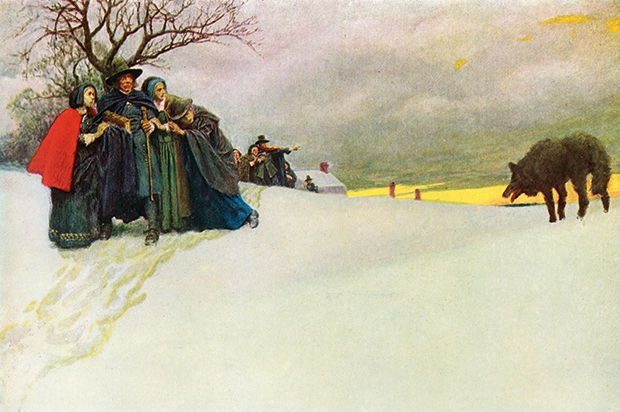There have been many books devoted to the terrible events that took place in the small rural community of Salem Village and its larger sister, Salem Town, between February 1692 and May 1693. As Stacy Schiff points out, most of them are shaped by particular theses — she lists 13 in all. This approach doesn’t just offer readers the consolation of an overriding explanation, but gives authors built-in filters, enabling them to concentrate on what proves their particular case.
Such a strategy is tempting because of the unruly complexity of the Salem phenomenon, with its hundreds of accusers, accused, magistrates, ministers and fearful bystanders. Schiff’s own selective cast of characters runs to six closely printed pages and lists 88 names. Nevertheless, she herself chooses not to squeeze what happened into the straitjacket of a predetermined interpretation. Instead she has assembled a vast array of data and then crunched it down chronologically, enabling her to tell the story day-by-day.
This is an impressive and valuable achievement. In discussing lacunae in contemporary reports of the crisis, Schiff points out that ‘the wealth of detail was too much for anyone’ — except, it seems, for Schiff herself, who is never overwhelmed by it. Readers may be, though, flipping back to the cast list, as with the baggier sort of Russian novel, to remind ourselves who was who.
For 400 pages Schiff sticks to telling the story as it might have been understood by an observer at the time, from the first disturbing outbreaks in the Parris parsonage to the final hangings and the soul-searching that followed them. Only towards the very end does she offer her own modest explanations: the girls might have been suffering from hysteria; Thomas Putnam, husband and father of prolific accusers, was a fraud and a manipulator.
This approach explains, and to an extent justifies, the misleading title. There were, of course, no witches in either of the Salems in 1692. In fact, in the sense understood by the court — people who have covenanted themselves to the devil in exchange for magical powers — there never have been any witches anywhere. But for much of her book Schiff persists with the rhetorical device of treating this delusional and fraudulent phenomenon (two strands that are difficult to unpick) as if the developing witchcraft narrative was established fact.
On the plus side, this makes her story vivid and disorientating, giving us insight into how the world might look if indeed there were witches abroad in it. The disadvantage is that after a while we start to think of the accused, all of whom were innocent victims, as if they were actually guilty in some way. George Jacobs, who hobbled into court with the aid of sticks, told his accusers: ‘You tax me for a wizard; you may as well tax me for a buzzard — I have done no harm.’ For Schiff such brave defiance establishes him as an ‘aging rascal’, while Sarah Good, another victim, ‘would seem to have wandered into the village directly from the Brothers Grimm’. We have to remind ourselves that Good was a real person, impoverished, homeless, probably mentally disturbed, who was horribly bullied and in due course killed.
And just as Schiff’s approach can deny sympathy to the victims, so it tends to give unmerited credibility to their persecutors. ‘One sharp-eyed 11-year-old saw Cloyse curtsy to the devil just outside the meetinghouse door.’ That’s what she claimed to have seen, not what she saw. Irony is so consistently sustained that from time to time author and reader can forget it’s there.
Schiff gives more unanimity to this anxious, backsliding, divided community than is always justifiable. She claims that when Bridget Bishop, the first of the court’s victims, was hanged there was ‘a collective sigh of relief’ across the Salems. Yet before finding her guilty the jury asked the chief justice William Stoughton to explain why the girls who Bishop supposedly tormented appeared unscathed; within days of Bishop’s execution one of the judges, Nathaniel Saltonstall, resigned and the Massachusetts governor commissioned a report on the court’s procedures. But perhaps simplifications and short cuts are inevitable, given the scale of the task Schiff has set herself.






Comments